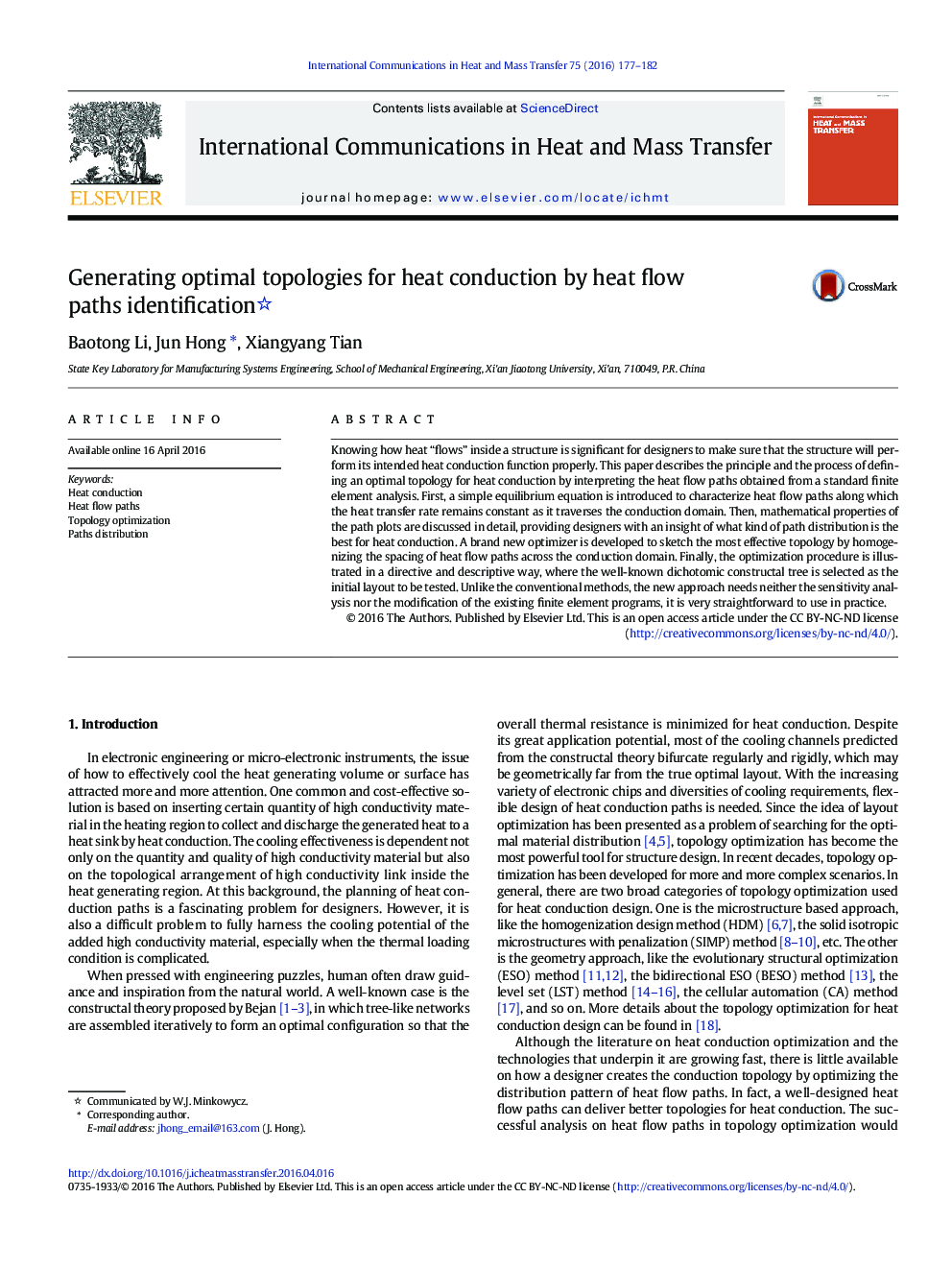| Article ID | Journal | Published Year | Pages | File Type |
|---|---|---|---|---|
| 7053320 | International Communications in Heat and Mass Transfer | 2016 | 6 Pages |
Abstract
Knowing how heat “flows” inside a structure is significant for designers to make sure that the structure will perform its intended heat conduction function properly. This paper describes the principle and the process of defining an optimal topology for heat conduction by interpreting the heat flow paths obtained from a standard finite element analysis. First, a simple equilibrium equation is introduced to characterize heat flow paths along which the heat transfer rate remains constant as it traverses the conduction domain. Then, mathematical properties of the path plots are discussed in detail, providing designers with an insight of what kind of path distribution is the best for heat conduction. A brand new optimizer is developed to sketch the most effective topology by homogenizing the spacing of heat flow paths across the conduction domain. Finally, the optimization procedure is illustrated in a directive and descriptive way, where the well-known dichotomic constructal tree is selected as the initial layout to be tested. Unlike the conventional methods, the new approach needs neither the sensitivity analysis nor the modification of the existing finite element programs, it is very straightforward to use in practice.
Keywords
Related Topics
Physical Sciences and Engineering
Chemical Engineering
Fluid Flow and Transfer Processes
Authors
Baotong Li, Jun Hong, Xiangyang Tian,
